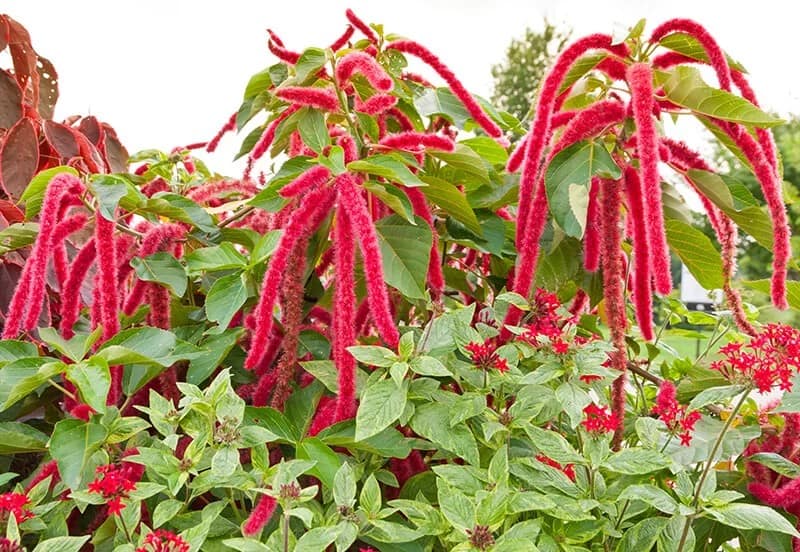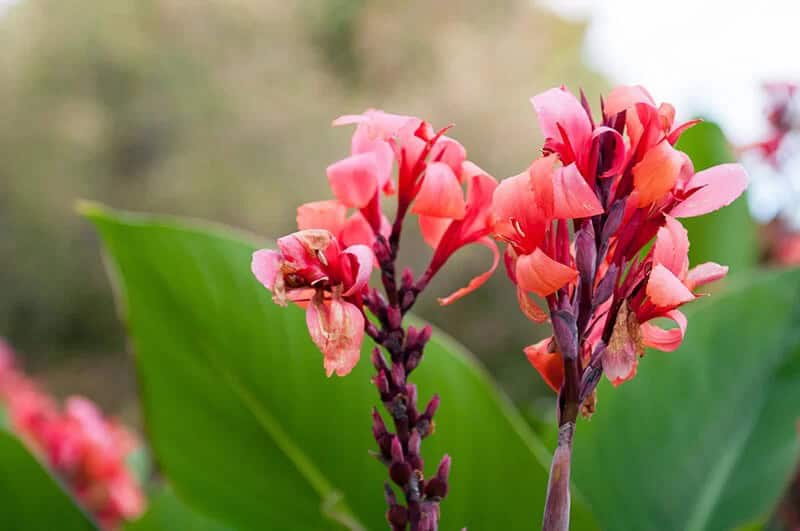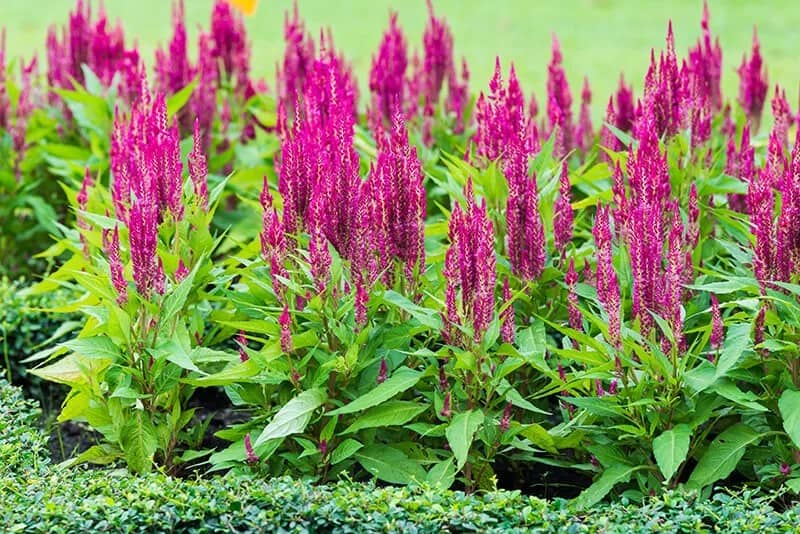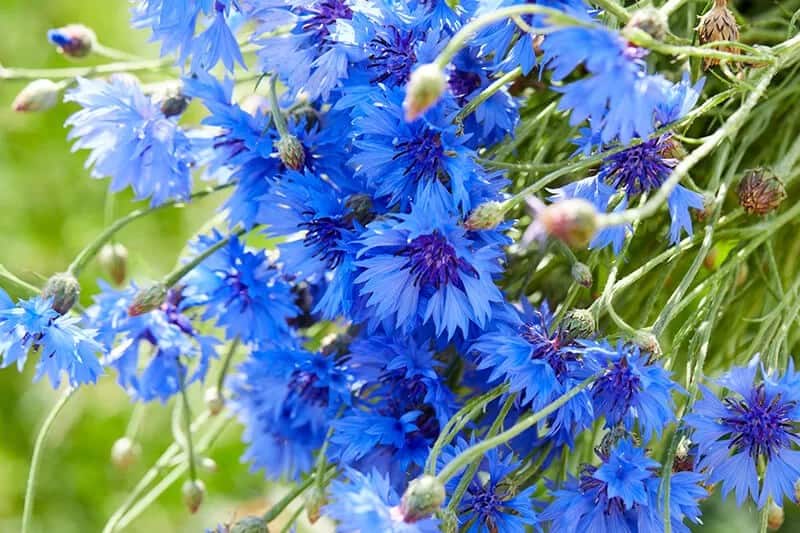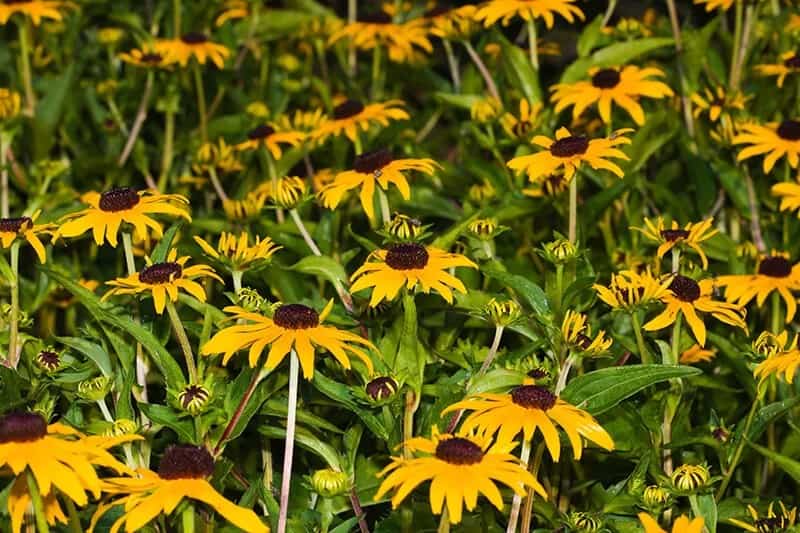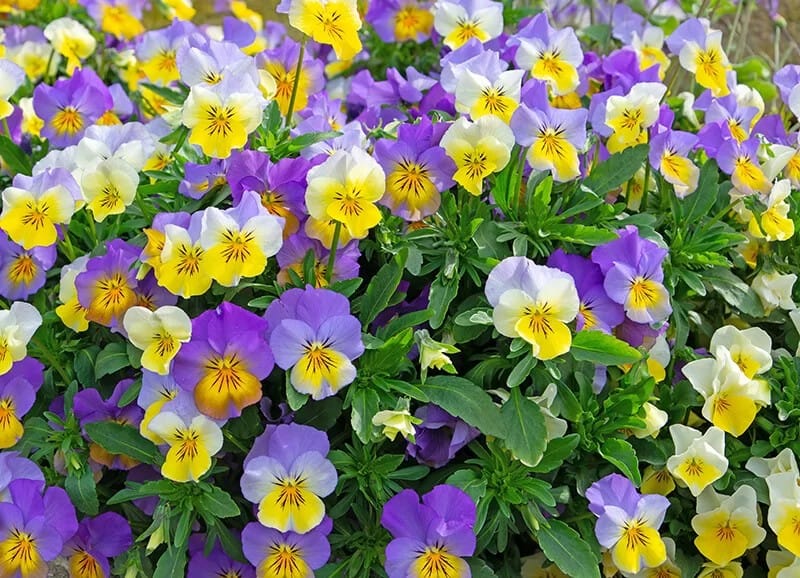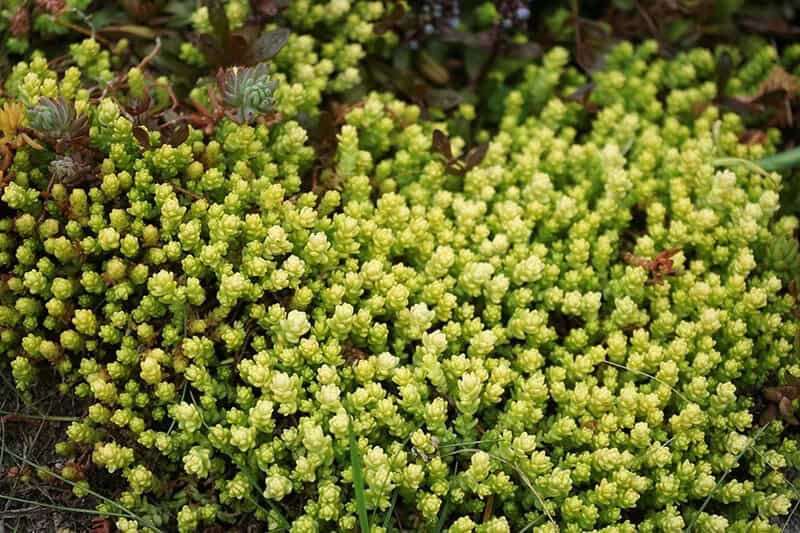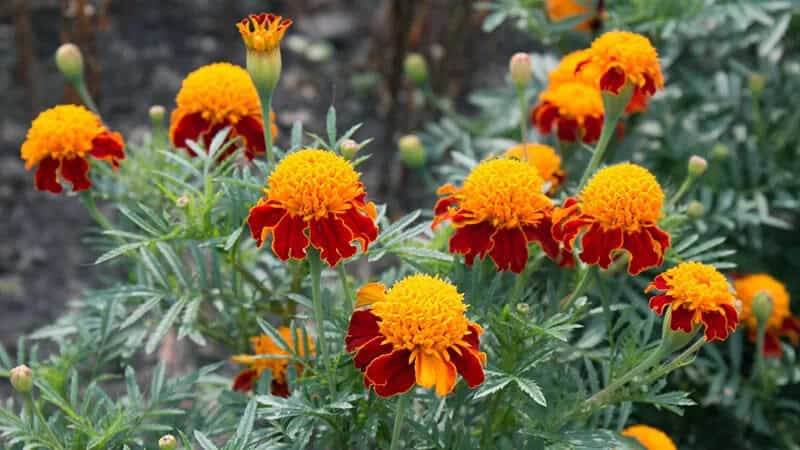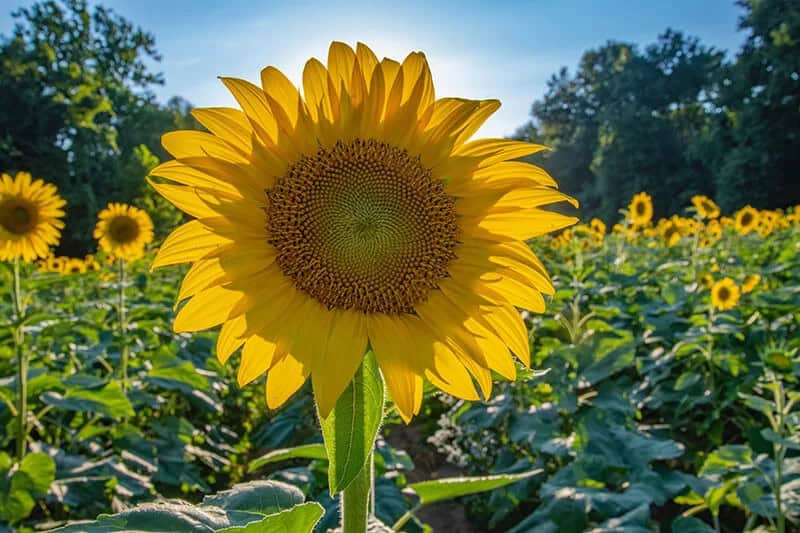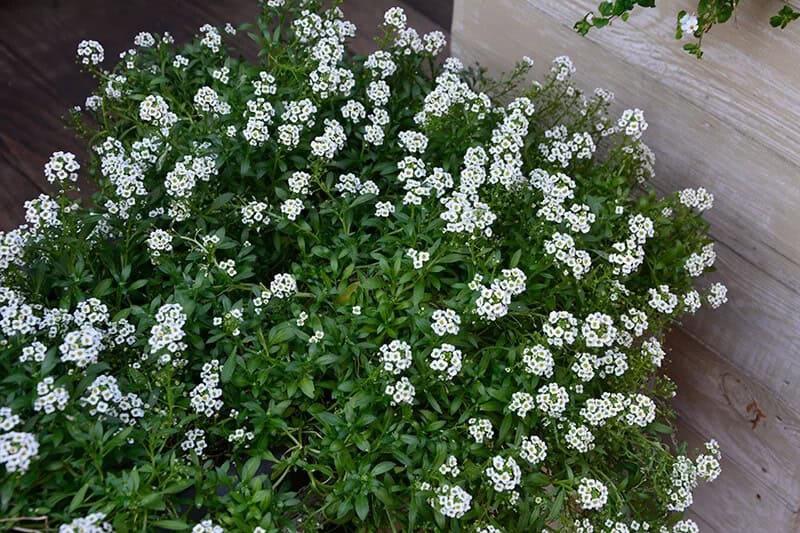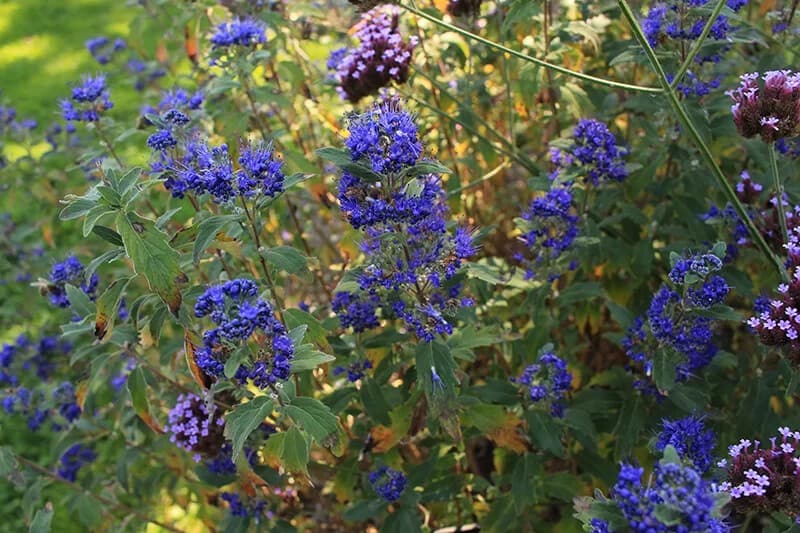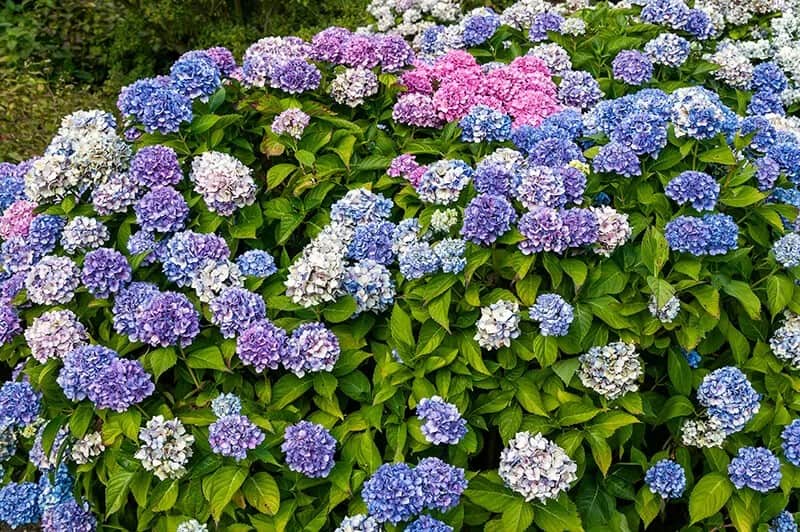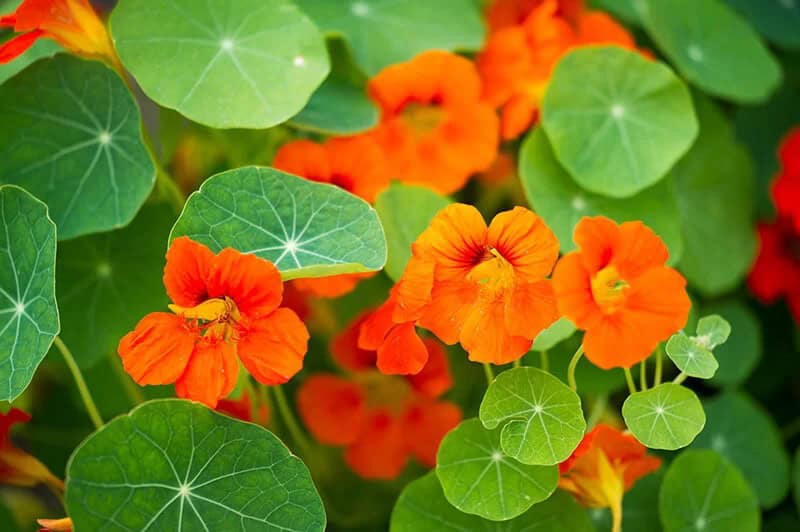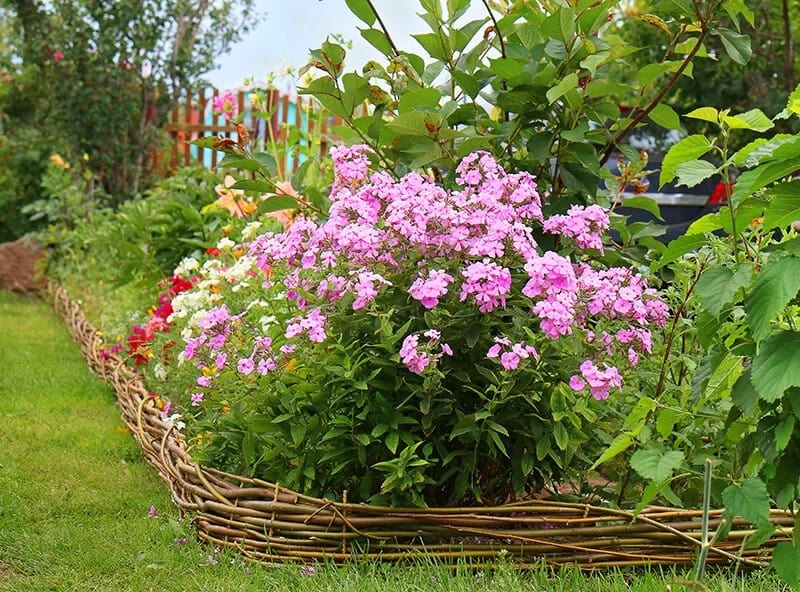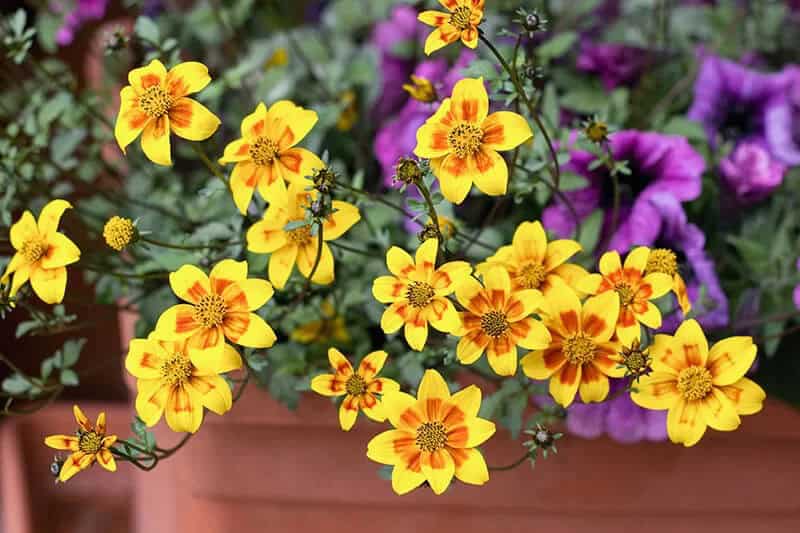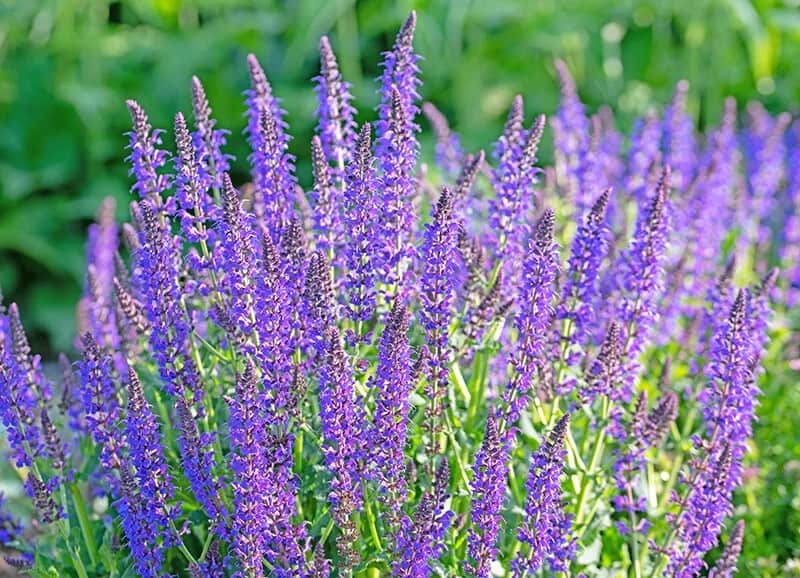While many gardeners view fall as a time to wind down and prepare their gardens for the colder months ahead, there’s no reason why you can’t keep your outdoor space thriving throughout the season. In fact, fall offers a unique opportunity to add some vibrant colors and textures to your garden beds by planting a variety of beautiful fall flowers. From daisies to marigolds, there are countless options to choose from, each offering its own unique beauty and charm.
So why not take advantage of this opportunity to add some excitement to your garden and keep it looking its best right through until the first frosts start to appear? With a little planning and preparation, you can create a stunning fall display that will be the envy of all your gardening friends.
28 Fall Flowers That Will Bring Your Garden Back to Life
As the autumn season approaches, a vibrant array of fall flowers can elevate your outdoor space and provide a sense of accomplishment that’s hard to replicate with other seasonal activities. Not only will these colorful blooms add warmth and coziness to your garden, but they’ll also give you more time to explore your indoor hobbies before the cold winter sets in.
Amaranth (Amaranthus “One that Does not Wither”)
Amaranth, a stunning plant known for its distinctive stems and foliage, holds significant symbolism in various cultures. Its reddish hue, often accompanied by spines serving as natural armor, adds to its unique appeal. The leaves of this fall flower are shaped like eggs, featuring prominent green or red veins and long petioles that set them apart from other plants. When it comes to thriving, Amaranth requires rich, well-drained soil and 5 hours of sunlight per day.
It’s essential to provide regular watering to meet its water needs. This hardy plant is adaptable to a wide range of growing zones, from 2 to 11, making it an excellent choice for gardeners. As mid-summer approaches, the Amaranth begins to bloom, showcasing its vibrant colors and adding a pop of color to any outdoor space.
Canna (Cane “Indian Shot”)
Canna flowers are renowned for their stunning beauty and symbolic significance, representing perfection in various cultures. These vibrant blooms require specific conditions to thrive, including 1-2 inches of water per week, moist soil with a pH range of 6.0-6.5, and full sunlight. With growing zones ranging from 9 to 10, Canna flowers are perfect for warm climates. The blooming season typically begins in midsummer and extends into fall.
One of the most striking aspects of Canna flowers is their kaleidoscope of colors, featuring hues of Cream, Pink, Yellow, Red, and Orange. Although orange blooms have a relatively short lifespan, they’re quickly replaced by new, equally vibrant flowers. Interestingly, Canna flowers belong to the Cannaceae family and boast an impressive 10 species, making them a unique and captivating addition to any garden.
Celosia (Celosia Argentea “Red Velvet”)
The vibrant Celosia blooms with colorful flowers, not only adding aesthetic appeal to your garden but also serving as a sweet treat when snacked on. This flowering gem can maintain its showy display for up to ten weeks, flaunting flower heads in a kaleidoscope of colors including pink, gold, orange, purple, and sometimes a stunning multi-hued spectacle.
With low water requirements, the Celosia thrives in environments with minimal moisture needs, making it an ideal choice for areas prone to drought. It’s also happy to soak up the sun, requiring 6-8 hours of direct sunlight daily. Organic-rich soil is another plus, allowing the plant to flourish in zones 10 to 12 during its late summer to fall blooming season.
Balloon Flowers (Platycodon Grandiflorus “Chinese Bellflower”)
The Balloon flower (platycodon) is a stunning perennial that embodies symbolism of honesty, endless love, and desire. With its vibrant colors of blue-violet, pink, and white, this plant can grow up to two feet tall and one foot wide. Native to East Asia, the Balloon flower, also known as Chinese bellflower, thrives in rich soil with good drainage, full sunlight, and consistent moisture. It requires a growing zone between 3 to 8 and blooms late summer into early fall.
Hardy Fuchsia (Fuchsia Magellanica “Hummingbird Fuchsia”)
The Hardy Fuchsia is a stunning plant that thrives with symbolism tied to confiding love. To keep it healthy, it requires moderate amounts of sunlight ☀️ and rich soil with high levels of nutrients 🪴. In terms of watering, it needs to be done 1-2 times a week 💧. This adaptable species can grow well in zones ranging from 6 to 7 🌍. One of its most striking features is the beautiful drooping flowers that resemble bell-shaped or tubular structures 🌱.
These blooms can be observed during spring and fall in subtropic regions, while in tropical areas, they can be enjoyed year-round. The vibrant colors on the flower petals include red and purple hues.
Cornflower (Centaurea Cyanus “Bachelors Button”)
The Cornflower’s symbolic significance is rooted in its associations with fidelity, reliability, and tenderness. This annual flowering plant thrives in well-drained garden soil and can tolerate drought, requiring only occasional watering – once a week, to be precise. Its growth habits are also adapted to open fields with full sun, making it an ideal choice for sunny spots in the garden.
Native to Europe, the Cornflower is a member of the Asteraceae family, which includes daisies and marigolds. This low-maintenance plant grows up to 35 inches tall, with leaves ranging from 1-4 cm in length. Its most striking feature, however, is its vibrant blue blooms that erupt during late spring and mid-summer. With a growth zone range of 2 to 11, this versatile flower can be enjoyed by gardeners across North America.
Cosmos (Cosmos Bipinnatus “Mexican Aster”)
The Cosmos flower is steeped in symbolism, representing order and harmony. To thrive, it requires regular watering, a neutral soil pH, and full sunlight exposure. Its ideal growing zones are 2 to 11, with the blooming season spanning from summer until the first frost of autumn. Within the Aster family, there are 20 distinct perennial and annual varieties of Cosmos, ranging in height from 1 to 6 feet and boasting a vibrant palette of colors including pink, orange, yellow, red, and white.
As a versatile and adaptable flower, Cosmos can be grown successfully in both garden beds and containers, making it an excellent addition to any fall bouquet.
Black-Eyed Susan (Rudbeckia Hirta “Coneflower”)
The humble Black-eyed Susan (Achillea millefolium) is often overlooked, yet it boasts a range of fascinating characteristics. As an emblem of encouragement and motivation, its symbolism extends beyond mere aesthetics. With moderate water requirements and tolerance for various soil types – from clay to loam – this hardy perennial can thrive in diverse conditions. Its adaptability is matched only by its ability to grow in zones 3 through 10, making it a versatile addition to any garden.
As the plant requires at least 5 hours of direct sunlight daily, it’s essential to provide the right environment for optimal growth. Interestingly, Black-eyed Susans typically bloom mid-summer until the first frost, painting the landscape with vibrant hues. A notable fact about this pioneer plant is its remarkable ability to be one of the first flowers to sprout in damaged areas following a fire or natural disaster.
This characteristic serves as a poignant reminder of the symbolism surrounding these resilient blooms – a testament to their capacity for growth and perseverance, even in the most challenging environments.
Begonia (Nelumbiifolia “Lilypad begonia”)
The Begonia’s distinctive foliage is a sight to behold, with hues ranging from bronze and pink to gray and green. Its unique charm doesn’t stop there – this versatile plant can thrive in a range of sizes, from 8 to 48 inches tall. One of its most notable features, however, is its ability to grow harmoniously in shaded areas, making it a prized addition to any garden.
As an added bonus, Begonias require minimal upkeep, with needs that include watering every 2-4 hours, well-drained soil, and bright, indirect light. They’re also surprisingly low-maintenance, with a blooming season that spans from June until frost. With its adaptable nature and striking appearance, it’s no wonder Begonias are a favorite among gardeners.
Rose (Rosa)
Roses have been a symbol of romance, beauty, courage, and love for centuries. Their rich history dates back 35 million years, according to archaeologists who have discovered rose fossils from that era. Beyond their symbolic significance, roses have also been a valuable resource for humans, with uses ranging from perfumes and teas to jams and other fragrant products. In fact, there are over ten different colors of roses, each with its own unique meaning when given as a gift.
To thrive, roses require specific growing conditions: they need to be watered every 2-3 days, and prefer moisture-retentive soil that is rich in nutrients and has good drainage. They also require 5 hours of direct sunlight per day, making them suitable for growth in zones 7 to 9. With a blooming season that spans from spring through fall, roses are a popular choice for gardens and floral arrangements alike.
Zinnia (Zinnia Acerosa)
The Zinnia, a symbol of endurance and friendship, is a vibrant addition to any garden. With its unique needs, this flower thrives in well-drained soil rich in organic matter, receiving only 1 inch of water every 5-7 days. Native to dry grasslands in the Southwestern United States and South America, the Zinnia brings beauty and attracts bees and butterflies to a garden when planted in full sunlight (Zones 2-8).
Blooming season typically runs from mid-summer until the first frost, making it an ideal choice for many regions. As part of the sunflower tribe within the daisy family, this flower is sure to brighten up any outdoor space.
Petunia (Petunia Atkinsiana)
Petunias are a vibrant addition to any garden, with their symbolic connection to anger and resentment making them a unique choice for those looking to express themselves through horticulture. As a moderate water lover, Petunias require a once-a-week watering schedule to thrive. In terms of soil, they prefer light, sandy conditions that allow for good drainage. With growing zones ranging from 10 to 11, these flowers are perfect for warmer climates.
When it comes to sunlight, Petunias need at least 5-6 hours of direct sun exposure each day to produce their stunning blooms. The blooming season typically runs from spring until the first frost, making them a great choice for gardeners looking to add some color to their outdoor spaces during the warmer months. With over 38 different varieties available, including popular options like Avalanche, Cascadia, Blanket, Dekko, and Dream, there’s sure to be a Petunia that fits your unique style.
Dahlia (Dahlia Pinnata “Asteraceae)
The Dahlia’s rich symbolism is often associated with wealth and elegance. This stunning flower thrives in moderate watering conditions, requiring a good soaking only once or twice a week. Its soil preferences include well-drained, acidic loam, making it an ideal choice for gardeners who value easy maintenance. Found in growing zones 8 to 11, the Dahlia’s light requirements are relatively modest, with six hours of direct sunlight per day providing optimal growth.
As the seasons transition from late summer into fall, the Dahlia blooms beautifully, its vibrant colors ranging from lavender and red to peach, pink, orange, white, and yellow. Interestingly, the Dahlia was named after Anders Dahl, an 18th-century botanist who initially classified it as a vegetable due to its edible tubers. Today, there are 42 recognized species of Dahlias, with the popular Ball Dahlia being a highly sought-after variety.
Viola (Genus Viola “Sweet violet”)
The Viola flower is steeped in symbolism, conveying notions of decency, modesty, and innocence. Its cultivation requires attention to a few key factors. Firstly, it needs regular watering to thrive – a task made easier by its adaptability to moist, nutrient-rich soil. The ideal growing zones for this plant range from 3 to 8, allowing for a wide distribution across different regions.
In terms of light exposure, the Viola prefers full sun or part shade, making it suitable for a variety of environments. Its blooming season typically falls in summer, although occasional fall blooms can occur. With over hundreds of species to choose from, including the striking Stream Viola and Bird’s foot viola, gardeners can select from an array of colors such as yellow, blue, white, and cream.
As the plant grows, it may initially prefer shady and cool areas, but its hardiness allows it to adapt to almost any environment during the blooming stages, making it a versatile addition to any garden.
Sedum (Genus Sedum “Stonecrop”)
Sedum, a succulent genus with over 400 species, is often associated with symbolism of peace and tranquility. This low-maintenance plant thrives in well-drained soil and can tolerate minimal watering needs. With its ability to grow in zones 3 to 11, Sedum is an ideal choice for gardeners across various climates. In terms of light requirements, Sedum prefers at least six hours of direct sunlight per day.
The blooming season typically occurs from July through late fall, showcasing star-shaped flowers in a range of colors including orange, red, white, yellow, and lavender. Depending on the species, Sedum plants either clump or creep, with clumping varieties growing up to 3 feet tall and creeping types spreading just a few feet across the ground.
Marigold (Tagetes “Herb of the Sun”)
Marigolds bring a burst of energy and positivity to any garden, thanks in part to their symbolic significance. But they’re not just a pretty face – they also require specific care to thrive. To get started, you’ll want to provide them with full watering once a week, making sure the soil is well-drained and moderately fertile. Marigolds are adaptable to a range of growing zones, from 2 to 11, and can handle anything from full sun to partial shade.
As for blooming season, they typically start in early summer and continue until the first hard frost. Once they’re in bloom, you can expect them to grow up to 6-48 inches tall and 6-36 inches wide, with a kaleidoscope of colors including red, maroon, yellow, orange, or even multi-colored. And the best part? Marigolds are a natural pest repellent, keeping those pesky insects and critters at bay and protecting your garden from potential harm.
Sunflower (Helianthus)
The sunflower is a symbol-rich plant, embodying qualities like loyalty, adoration, and longevity. Its unique characteristics extend beyond its striking appearance, as it requires minimal watering (approximately one inch of water per week) and thrives in alkaline soil conditions. With a growing range spanning zones 4 to 9, the sunflower can be cultivated in a variety of environments. As for light requirements, this plant demands full sunlight to truly flourish.
Its blooming period typically falls within the summer and fall seasons. A fascinating aspect of the sunflower is its intricate composition – each flower is comprised of smaller flowers, which in turn make up the larger bloom. This remarkable structure is reflected in the 52 distinct species of sunflowers, including the Skyscraper and Dwarf varieties.
Sweet Alyssum (Lobularia Maritima “Sweet Alison”)
When exploring images of Sweet Alyssum, it’s hard not to be captivated by the vibrant array of colors it presents. From rosey red to violet, lilac, white, and pink, this fall flower variety is truly a feast for the eyes. But what makes Sweet Alyssum even more captivating is its unique cluster arrangement, comprising tiny flowers that measure just 5mm in diameter.
As you delve deeper into the world of this autumnal bloom, you’ll also discover that it thrives in environments characterized by minimal watering needs (just 1 inch per week), moisture-rich and well-drained soil, a growing zone range of 9 to 11, and an ideal light condition of 6 hours of direct sunlight daily. In fact, Sweet Alyssum’s blooming season spans early spring and the winter months, making it a delightful addition to any garden or arrangement.
Marguerite Daisy (Argyranthemum frutescens “Paris Daisy”)

The Marguerite Daisy, also known as the French Marigold, embodies symbolism of new beginnings, playfulness, affection, and innocence. This charming flower requires minimal watering, with a weekly water supply being sufficient. It thrives in well-drained fertile soil and can be grown in USDA zones 9 to 11.
The Marguerite Daisy demands at least six hours of direct sunlight daily, making it an ideal choice for gardeners seeking a low-maintenance yet visually striking addition to their outdoor spaces. Its blooming season typically spans late spring to early fall, with the added bonus of coming in a range of colors including pure white, vibrant yellow featuring a brown center, and soft pink.
Measuring up to 3 feet tall with a thick, bushy appearance, this daisy is one of 24 species of flowering plants native to Macaronesia, a region comprising islands near the Atlantic Ocean.
Caryopteris (Caryopteris Clandonensis “Heavenly Blue”)
The Caryopteris, a stunning fall flower, is characterized by its vibrant blue-green hues, with shades ranging from silvery-blue to deep blues and purples. As one delves into the world of this autumnal bloom, it becomes clear that it has a unique affinity for symbolism – representing our innate desire to strive for achievement.
In terms of its environmental needs, the Caryopteris is surprisingly frugal, requiring very little water to survive and thriving in well-drained soil with medium-moisture levels. Its growing zones are quite specific, ranging from 5 to 9, making it an ideal choice for gardeners in those regions.
When it comes to its light requirements, the Caryopteris is a sun-worshipper, demanding full sunlight to reach its full potential.
Additionally, it blooms beautifully during late summer and early fall, adding a splash of color to the autumn landscape.
Hydrangea (Hydrangea Macrophylla “Sevenbark”)
The majestic Hydrangea, a symbol of beauty, grace, and gratitude, requires minimal water (about 1 inch per week) to thrive. Its roots need friable loam soil with high organic content to flourish, making it perfect for zones 3 to 7. As for light, the plant demands at least 6 hours of direct sunlight each day. When in bloom, Hydrangeas display a kaleidoscope of colors, including green, white, lavender, pink, and blue, from spring to early fall.
One of its most astonishing features is its ability to grow up to 15 feet tall, filling your garden space with grandeur by the end of the summer season.
Nasturtium (Tropaeolum “Indian Cress”)
The Nasturtium’s symbolic significance is deeply rooted in its representations of loyalty, strength, and purity. This vibrant flower, native to Peru’s lush jungles, exhibits a kaleidoscope of colors – ranging from fiery hues of red and orange to soft pastels of pink and white. As the foliage season unfolds, the Nasturtium’s petals transform into a mesmerizing shade of blue-green.
As the seasons change, the Nasturtium adapts by wrapping itself around shrubs and trees, imbuing its surroundings with an air of exotic elegance. In terms of cultivation, this striking flower thrives in well-drained soil with a neutral pH, requiring approximately 1-2 hours of direct sunlight per week. Its growing zones span from 4 to 8, making it a versatile addition to any garden or floral arrangement.
Phlox (Phlox Paniculata “Fall Phlox”)
The captivating Phlox flower is a symbol of unity, partnership, compatibility, and agreement, making it a meaningful addition to any garden or arrangement. To thrive, this stunning bloom requires a bit of TLC – a photo from depositphotos. com shows the perfect conditions. Water your Phlox once a week, ensuring the soil is rich in nutrients and evenly moistened. As an adaptable flower, it can grow well in zones 4 through 8, basking in the warmth of full sunlight.
The blooming season typically falls between mid-summer and fall, with vibrant colors ranging from mauve to pink, white, blue, red, and purple. Measuring up to 4-6 inches in length and 18 mm wide, this beautiful Phlox flower is a must-have for any floral enthusiast. Its origins lie in eastern and central America, where it’s native, but today it’s cultivated as an ornamental plant for its unique beauty.
African Daisy (Dimorphotheca Ecklonis “Blue-eyed daisy’s)
The African daisy, a member of the Sunflower tribe, boasts an astonishing 50 distinct species that showcase a kaleidoscope of colors including mauve, yellow, purple, pink, white, and cream. Notably, recent discoveries have delighted gardeners with the emergence of new species, rendering disappointment a thing of the past. This enchanting flower is characterized by its symbolism, representing purity, faithful love, innocence, good respect, and fidelity.
To thrive, the African daisy requires careful attention to its environmental needs: it demands drought-tolerance (1 inch of water per week), well-drained soil that’s slightly acidic, and full sunlight. Its growing zones are 9 to 10, with a blooming season that stretches from spring through fall.
Calibrachoa (Calibrachoa Parviflora “Million bells”)
The symbolism of Calibrachoa is deeply rooted in human emotions, particularly during trying times. Its vibrant hues – ranging from pink and yellow to blue, red, purple, and orange – serve as a beacon of hope and resilience. In the midst of life’s challenges, this delicate flower reminds us that even the most difficult moments will eventually give way to new beginnings. Beyond its symbolic significance, Calibrachoa requires specific care to thrive.
Adequate hydration is crucial, so it’s essential to keep the soil consistently moist but well-drained. Organic richness also plays a vital role in promoting healthy growth. This flowering annual thrives in temperate climates with USDA growing zones ranging from 9 to 11. As for light exposure, Calibrachoa prefers basking in the warm glow of six hours of direct sunlight per day.
During its blooming season, which typically spans from spring until the first frost, this charming flower will turn heads with its bright colors and delicate stems that can reach up to 8 inches in length.
Bidens (Biden Ferulifolia “Two-tooth”)
The Biden flower, which boasts vibrant yellow blooms measuring 2 inches in width, exudes tranquility through its symbolism. This low-growing perennial thrives in well-drained clay, loam, or sand soil and is surprisingly drought-tolerant. Its ability to withstand heat and wind makes it an ideal fast grower for the fall season. The Biden’s colors range from yellow to pink, white, red, and orange, offering a pop of vibrancy to any garden.
With its low water requirements (averaging only) and full sunlight needs, this flower is perfect for zones 10-11.
Garden Mums (Chrysanthemum “Queen of Fall Flowers”)
The majestic Queen of Fall flowers, Garden mums, bring joy and happiness with their vibrant colors and extravagant blooms. These hardy plants thrive in conditions marked by well-drained soil, full sunlight, and a regular watering schedule that provides about an inch of water per week. With a growing zone range of 4 to 9, Garden mums are adaptable to various climates. One of the most striking features of these flowers is their limited blooming season, which occurs solely in the fall.
During this time, they produce a kaleidoscope of colors including yellow, pink, white, red, lavender, and bronze. With thousands of varieties to choose from, gardeners can select the perfect mums to match their unique landscape designs and plan for a stunning fall display.
Salvia (Salvia Officinalis “Culinary Sage”)
Salvia, a vibrant addition to any garden, is steeped in symbolism, representing longevity, esteem, wisdom, and good health. Its water requirements are modest, with the ideal amount being around one inch every seven to ten days. The soil needs of this beauty are straightforward – it thrives in well-drained soil. Gardeners in USDA hardiness zones four through ten can grow Salvia, making it a versatile choice for many climates.
Sunlight is essential, with full sun exposure being the key to its success. As a bonus, Salvia blooms in the spring and early summer, with a secondary blooming period in the fall. Its flowers boast an array of colors including green, brown, white, yellow, orange, pink, blue, purple, and red, adding a pop of color to any garden. With heights ranging from 24-30 inches, Salvia is sure to make a statement.
The Top 28 Fall Flowers to Bring to Your Home Garden this Fall
While designing a garden bed with fall flowers offers a chance to revamp one’s outdoor space, it also presents an opportunity to discover the fascinating stories behind these seasonal blooms. Each variety has its own unique history, stemming from its native country and symbolizing various themes such as love, longevity, and good health.
By incorporating specific fall flowers into a garden due to their intriguing facts and symbolism, a yard is not only enhanced but also becomes a treasure trove of knowledge.
